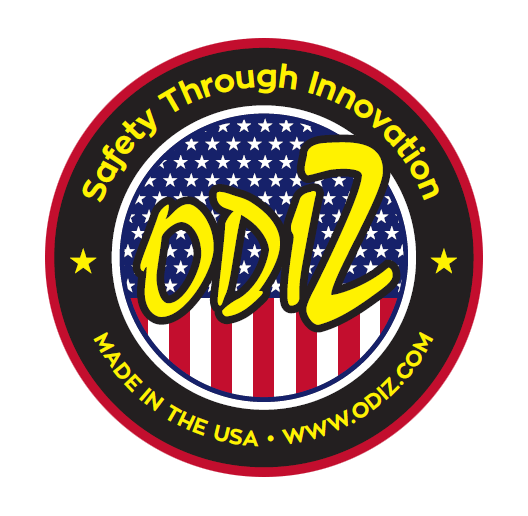OSHA Mobile Stair & Platform Inspections
Contact us
Professional mobile stair inspections and OSHA mobile platform compliance services. Ensure your mobile ladder stands meet 29 CFR 1910.23(e) standards with our digital inspection app.
Mobile ladder stands and platforms are essential for safe elevated access in warehouses and manufacturing, but without proper inspection they become major OSHA violations and workplace hazards.
To request more information about this product or service, please complete the form below. You can also chat live with one of our specialists via the widget in the bottom-right corner of your screen or call us at (574) 318-4333.
OSHA Standards for Mobile Stairs & Platforms
29 CFR 1910.21
Definitions Standard
29 CFR 1910.23(e)
Mobile Stair Requirements
SHIB 03-12-2019
OSHA Safety Guidance
4:1 Ratio
Max Height-to-Base
Common OSHA Mobile Stair Violations
Employers are frequently cited under OSHA standards for mobile stair violations that create serious fall hazards and expose companies to significant penalties.
📏
Inadequate Step Dimensions
Steps narrower than OSHA’s 16-inch minimum requirement or excessive rise over 10 inches.
🚧
Missing or Damaged Rails
Missing or damaged handrails, midrails, guardrails, or toeboards required for safety.
🔒
Defective Caster Brakes
Wheels or casters without functioning brakes or locks to prevent movement during use.
⚖️
Unstable Height Ratios
Height-to-base ratio exceeding 4:1 without required outriggers or counterweights.
🚫
Moving While Occupied
Moving mobile stairs while occupied, violating fundamental OSHA safety requirements.
🛡️
Inadequate Platform Protection
Platforms over 10 ft without complete rail protection and proper guardrail systems.
Why Mobile Stair Inspections Matter
Failing to properly inspect mobile stairs and platforms and document OSHA mobile equipment compliance can lead to serious consequences for your business and employees.
- Fall hazards and serious employee injuries
- Costly OSHA penalties under 1910.23(e)
- Liability exposure in accident events
- Unsafe workplace culture and increased downtime
Regular inspections ensure equipment stability, secure rails, proper caster function, and full OSHA compliance.
SAFETY FIRST
OSHA Standards for Mobile Stairs
Mobile ladder stands and platforms are regulated under specific OSHA standards that govern design, stability, and safe use requirements.
1910.21
Definitions & Classifications
Defines mobile ladder stands and mobile ladder stand platforms with specific design criteria.
1910.23(e)
Design & Use Requirements
Comprehensive requirements for rails, stability, step dimensions, and safety features.
SHIB 03-12-2019
OSHA Safety Guidance
Official guidance for working safely with mobile stands and platforms in industrial settings.
Interpretation Letters
2024 Clarifications
Recent OSHA clarifications on step width, rise, tread depth, and compliance requirements.
The Smarter Way to Stay Compliant
Our OSHA Mobile Stair Inspection App helps you verify compliance with 29 CFR 1910.23(e) and maintain audit-ready documentation.
📐
Step Dimension Verification
Verify step width, rise, tread depth, and slope against OSHA specifications automatically.
🛡️
Rail System Documentation
Document guardrails, handrails, and midrails where required by OSHA standards.
📋
Equipment Tracking
Track equipment ID, model, manufacturer, and service dates for complete records.
⚖️
Stability Verification
Confirm caster brakes and height-to-base stability ratios meet OSHA requirements.
🚨
Automatic Flagging
Automatically flag non-compliant units for immediate removal from service.
📊
Audit Documentation
Store complete inspection history for audit-ready documentation and compliance proof.
Make mobile stair inspections simple, accurate, and fully OSHA-compliant with our comprehensive inspection solution.
Stay Ahead of OSHA Citations
Mobile stairs are regulated with the same rigor as ladders and scaffolds. Protect your employees and company by making inspections simple, accurate, and fully OSHA-compliant.
Reduce Accident Risk
Minimize fall hazards and workplace injuries
Stay Compliant
Meet 29 CFR 1910.23(e) requirements
Document Inspections
Maintain audit-ready proof of compliance
Improve Efficiency
Boost worker confidence and productivity
Frequently Asked Questions
Common questions about OSHA ladder inspections, monthly safety requirements, and compliance standards.
When are handrails required on mobile stairs?
OSHA requires handrails when the top step or platform is 4 feet or higher under 29 CFR 1910.23(e). This applies to all mobile ladder stands and platforms in industrial settings.
Do all mobile platforms need guardrails?
Yes, if the platform height exceeds 10 feet, guardrails and toeboards are mandatory according to OSHA standards. Platforms must have complete rail protection systems.
What are the OSHA requirements for caster brakes?
OSHA requires a system to impede horizontal movement (locks or brakes) whenever the mobile stair unit is in use. Casters must function properly to prevent movement during operation.
Can mobile stairs be moved while someone is on them?
No. Mobile ladders and platforms must never be moved while occupied according to §1910.23(e)(9). This is a fundamental OSHA safety requirement.
What are the minimum step width requirements?
OSHA requires a minimum step width of 16 inches for mobile ladder stands. Steps must also have proper tread depth (minimum 7 inches) and rise (maximum 10 inches).
How often should mobile stair inspections be performed?
OSHA requires inspection before each use, similar to ladder requirements. Regular documented inspections help ensure ongoing compliance and worker safety.


